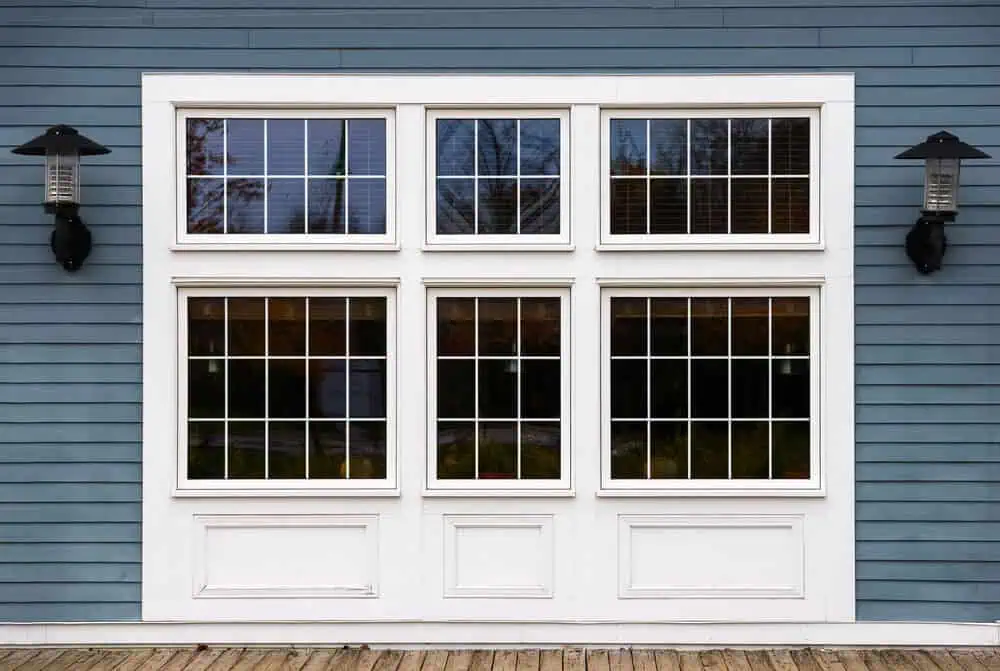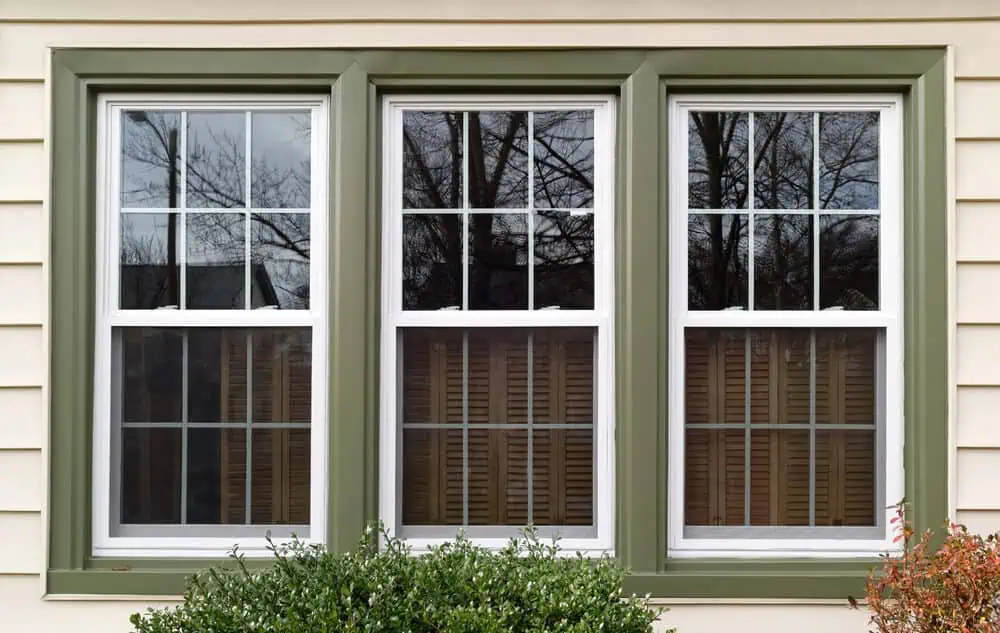While upgrading older windows is almost always worthwhile in Michigan, a window replacement project isn’t a small feat. Replacing windows requires an investment in resources, an understanding of your budget, and how to get the most out of your money while balancing style and practicality. Few folks would willingly embark on this path more often than absolutely necessary, so it’s important to understand the lifespan of replacement windows before ordering any new replacement windows in Michigan.
If you’re looking to replace windows in your home, we want to help. We put together this guide on the different window materials and how long they should last in Michigan. Here’s what you need to know.
Why Material Matters
Replacement window materials have a big impact on how long a window will last. Some materials will start to break down and degrade after years of sunlight exposure, freezing conditions, and other environmental issues. Other materials might change appearance, become difficult to operate, or even break as they age.
Other window replacement factors to consider have less to do with longevity and more about how certain materials might perform in various conditions. Some window materials perform better in very cold conditions, as they contract less and allow the window to retain its seal or simply don’t transfer heat as well. Also, while all windows are exposed to the elements, some window materials have maintenance requirements that others do not.
Lifespan of Replacement Windows: By Material
As mentioned, different material types have their own attributes and lifespans. The following are the most common replacement window materials and the important information about their strengths, weaknesses, and how long a homeowner can expect them to last. Get to know these different materials before installing windows in your home.
Vinyl Frames
Vinyl windows are the most common replacement windows available. They’re made from polyvinyl chloride, or PVC, which is the same base material used in plumbing pipes. They’re usually white in appearance, though they may be available in other colors.
Vinyl windows have many upsides. They’re lightweight yet durable, and they don’t require much maintenance. They’re bug and rot-resistant and won’t rust or corrode. Vinyl windows are also affordable and good insulators, helping homeowners save money upon purchase and over time. Their main drawback is that they can lack style and they don’t always meet historic district standards.
Homeowners who choose vinyl replacement windows can expect to get 20 to 40 years out of their lifespans. And since vinyl replacement windows became popular in the 90s and 2000s, many existing replacement windows may be due for an upgrade.
Wood Frames
Wood frames are made from a wide range of wood species, and they’re designed to blend in with the home’s interior and build period. Common species include pine, oak, and mahogany, though other species such as hemlock, alder, and teak are also available.
One of the favorite aspects of wood replacement windows is their appearance. Wood windows are often stylish and period-correct, so wood replacements provide all the advantages of new windows without detracting from the aesthetics. They’re often approved for historic districts as well. As far as energy efficiency goes, wood is a good insulator and reduces energy consumption.
Wood replacement windows can last between 20 and 60 years, but they do require regular maintenance to protect against rot, insect damage, and other issues experienced with organic materials. In areas like Michigan, the main concern
Aluminum Frames
Aluminum became a popular material in window construction in the 1950s. It was preferred for its minimal weight and strength. They were used in many of the developments and neighborhoods during the housing boom of the time as they were affordable and relatively easy and affordable to mass produce.
Today, modern aluminum replacement windows are still an excellent option. They’re still lightweight and durable, and they’re also available in a wide range of colors and styles. Aluminum is also recyclable, which is a plus for many eco-conscious homeowners. On their own, aluminum replacement windows are poor insulators, but when designed with a thermal break, they do an excellent job of reducing energy consumption.
Aluminum windows will typically last 20 to 30 years, so not the longest of the materials on the list. When they fail, it’s typically due to corrosion. However, occasional painting can usually prolong the life of a replacement window.
Fiberglass Frames
Fiberglass windows first hit the scene in the 80s and 90s but didn’t really become a popular choice until the 2010s. These replacement windows (and new construction windows) are made from glass fibers and resin, and they can be used to produce a range of styles and colors.
Fiberglass replacement windows are some of the most durable options on the market. There is virtually no maintenance to perform and the material is very stable against warping and swelling. Fiberglass won’t corrode and does a great job of insulating against the elements in both extremely cold and warm climates.
Fiberglass replacement windows can last 30 to 50 years, though they can last even longer. This lifespan could potentially offset the initial investment for anyone considering these versatile and durable replacement windows.
Composite Frames
Composite window frames are made from a combination of materials, such as wood fibers, resins, plastics, and other stable and durable materials. Windows with composite frames were introduced in the 90s as a way to use recycled materials to create a superior, stable product. They come in a range of colors and styles, and can mimic the look of wood or other materials.
Composite replacement windows are typically extremely durable and low maintenance. They’re rot and insect-resistant, and they don’t warp, swell, or shrink in extreme environments. They’re also designed to excel in energy efficiency, creating an effective barrier for harsh weather conditions.
Composite replacement windows can last 30 to 40 years, making them a great option for Michigan homes. They have very little upkeep requirements, as well, similar to vinyl and fiberglass.
Other Factors That Affect Lifespan
Material choices are important. Each has a base range that a homeowner can reasonably expect their replacement windows to last. However, there are several other factors that can impact the lifespan of replacement windows in The Great Lake State.
Window Installation Quality
One of the most important factors to consider is the quality of the replacement window installation process. Inexperienced or hasty crews can install energy-efficient, high-quality windows improperly, causing air flow and water damage. Also, windows installed incorrectly can be difficult to operate, causing stress on the frame, handles, and hardware that can lead to premature wear.
Don’t forget that improperly installed windows can also impact your heating and cooling bills. There is often a lot of air movement around a bad install, allowing warm air to escape in the winter and hot air to enter the home in the summer, increasing energy bills.
For these reasons, we suggest choosing window experts who know what they’re doing. Expert installation ensures you benefit from reduced heating and cooling costs, get the best possible usable life for your windows, and enjoy the natural light and style your home deserves.
Exposure to Conditions
The conditions a window is exposed to will impact its realistic lifespan. For example, a window in San Diego, with mild temperatures year-round, will likely reach its maximum lifespan. However, Michigan’s extreme winters can significantly reduce a replacement window’s lifespan, even if they’re touted as energy-efficient windows.
Maintenance
Some replacement window materials require more maintenance than others. For instance, wood windows will need to be painted or sealed every few years to ensure they last as long as possible. Also, double-hung windows, sliding windows, and casement windows that start to stick and become difficult to operate will require attention to ensure that hardware or components don’t break from force.
Frequency of Use
Frequency of use is a major factor, but one without a clear, cut-and-dry answer. Replacement windows that are opened and closed frequently will have more wear and tear on their latches, tracks, and sashes than those that are operated infrequently. This could lead to failing prematurely.
However, windows that have not been operated often enough can start to stick. Once they’re finally opened, their weatherstripping and seals can fail. There’s no straightforward answer here, but frequency of use will impact the window’s lifespan.
So, What is the Lifespan of Replacement Windows for Homes in Michigan?
Determining the lifespan of replacement windows comes down to a few things. The materials, the maintenance, and the quality of the installation are the biggest factors, and if the latter two are created equal, then homeowners can expect to get at least 20 to 30 years out of their replacement windows on their Michigan homes. As we said earlier, they’re almost always worth it. Contact Pro Home Improvement for replacement window solutions that make your home more energy efficient and improve the look and feel of your home. We have a wide selection of window materials that we work with, so reach out to our team today.


